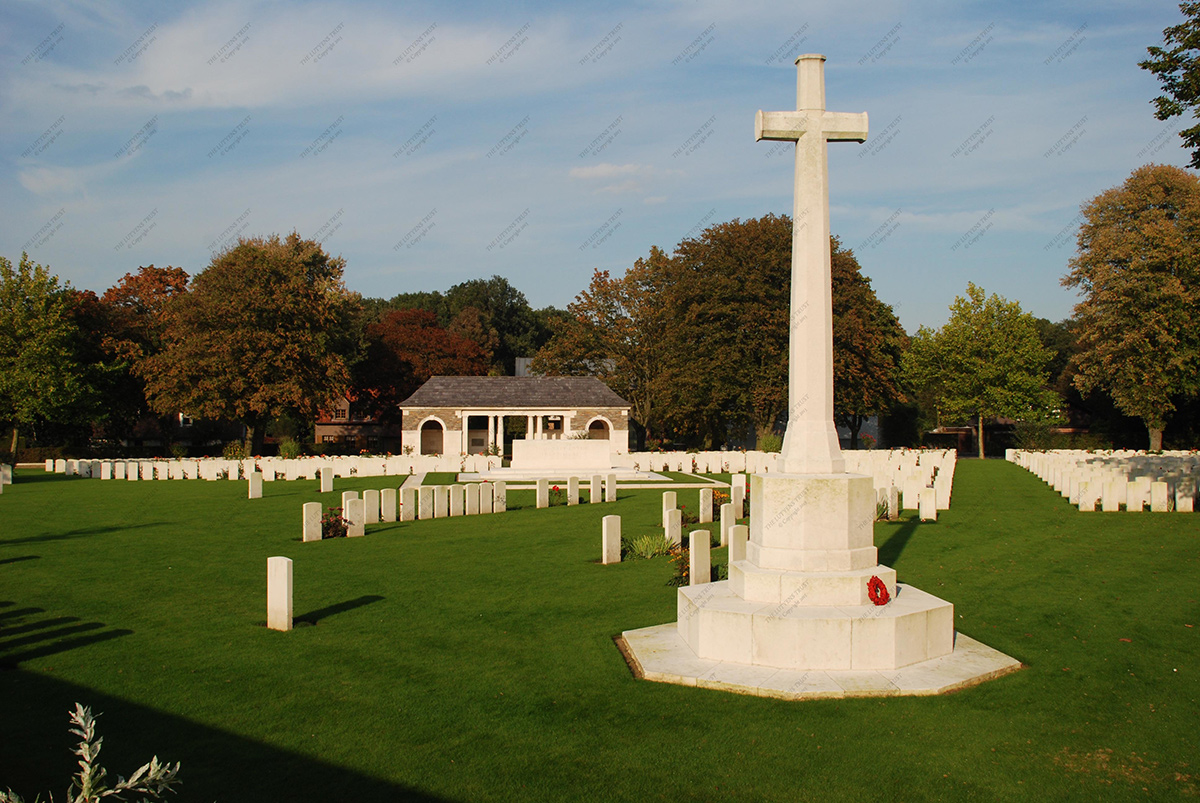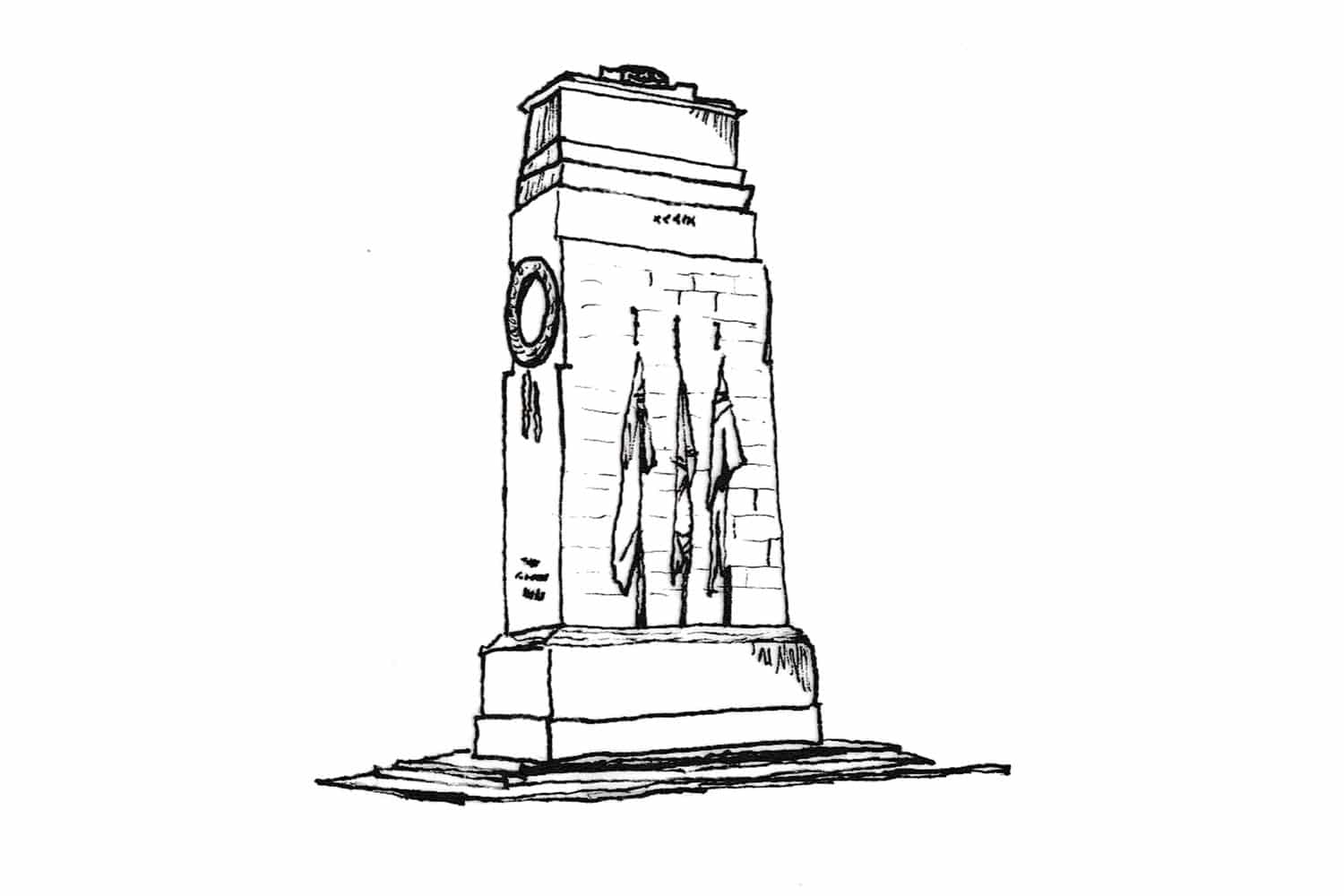
Description
Sanctuary Wood is one of the larger woods in the municipality of Zillebeke. It was given this name in November 1914, when it was used to hide troops behind the frontline. It was the stage of fighting in September 1915 and the centre of the Battle of Mount Sorrel, from 2 to 13 June 1916, in which the 1st and 3rd Canadian divisions were involved. There were three cemeteries in Sanctuary Wood before June 1916, constructed between May and August 1915. All three of them were virtually destroyed in the Battle of Mount Sorrel, but the remains of one of them became the centre of the present cemetery. At the time of the Armistice it comprised 137 graves. At a fairly late stage, between 1927 and 1932, the cemetery was extended as far as the avenue with maples, with graves from cemeteries in the vicinity and the coastal area. The majority of the graves were for casualties of the First Battle of Ypres and the Allied offensive of the autumn of 1917. Many of them were identified and buried in groups. The private war museum Hill 62 is situated at some distance along Canada Avenue.The cemetery lies in a bend of a maple-lined avenue leading to a Canadian monument. The ground rises a little and ends in a point. The side of the maple avenue, which itself has a slight gradient, is horizontal. The fan-shaped field follows the bend in the road, so that the trees of the avenue form the spatial boundary on the north side. An unusual aspect is that the rows are not straight, but follow the bend in the road. Due to the slope in the field, the head- stones are clearly visible from the road. All paths lead to the highest point, with the Cross of Sacrifice, and a curved seat beyond. As the road rises, the horizontal plateau on the east side of the cemetery disappears into the ground. At the entrance the difference in height is about fifty cm, which is bridged by means of steps. The plateau, with the War Stone in its central position, is one step up and the bench is on a two-step platform. A wall of about one and a half metres high, made of stone, surrounds the cemetery. At the front, this wall is lowered by means of a quarter arc and continues onward under ground level as a terrace wall, recalling the ha-ha fence of nearby Maple Copse Cemetery.
The entrance is accentuated by an entrance building on the maple avenue, but as the terrace wall is low at the front, the cemetery opens up expressly on the side of the road, whereas the nearby Hooge Crater Cemetery, for example, is oriented toward the landscape. The rather exceptional entrance building is made up of two shelters, which are connected by an open loggia with double Doric columns on the south side. The maple-avenue side has a relatively closed layout. The building has three kinds of natural stone. The fronts are of white and grey-brown natural stone and the roofing material is slate. The ceiling of the loggia is level and those of the two shelters are dome-shaped.
The curved form of the rows of stones is unique, and is evidently a Lutyens’ touch, showing the architect’s predilection for circular forms. The majority of the graves face northeast, whereas the headstones of the original cemetery, which was partly destroyed, face north. This is what makes this part readily recognizable. The War Stone is not emphatically on the east side, a principle usually advocated by Lutyens, but in the centre of the cemetery. This, incidentally, is also seen in other cemeteries of his design, such as that in Grévillers near Bapaume in the north of France. There is one central axis and no lateral axis; this would be awkward given the curved rows. All paths run in the direction of the seat and the Cross of Sacrifice, like rays.
Apart from the maples lining Canada Avenue, there are seven old hornbeams that surround the cemetery, and another tree recently planted. Farther, on the side of the road, there are two plane trees at the end of two sidepaths. On the outward-facing side of the cemetery, along the road, there is a private monument dating from 1915 in memory of Keith Rae, which was in Hooge Crater Cemetery until 1978. (Geurst, 2010, p.404-6)
Bibliography
Geurst, J. (2010) Cemeteries of the Great War by Sir Edwin Lutyens. Rotterdam: 010 Publishers.Also Cited In
Listing Grade
Coming soonListing Reference
Client
Imperial War Graves Commission



